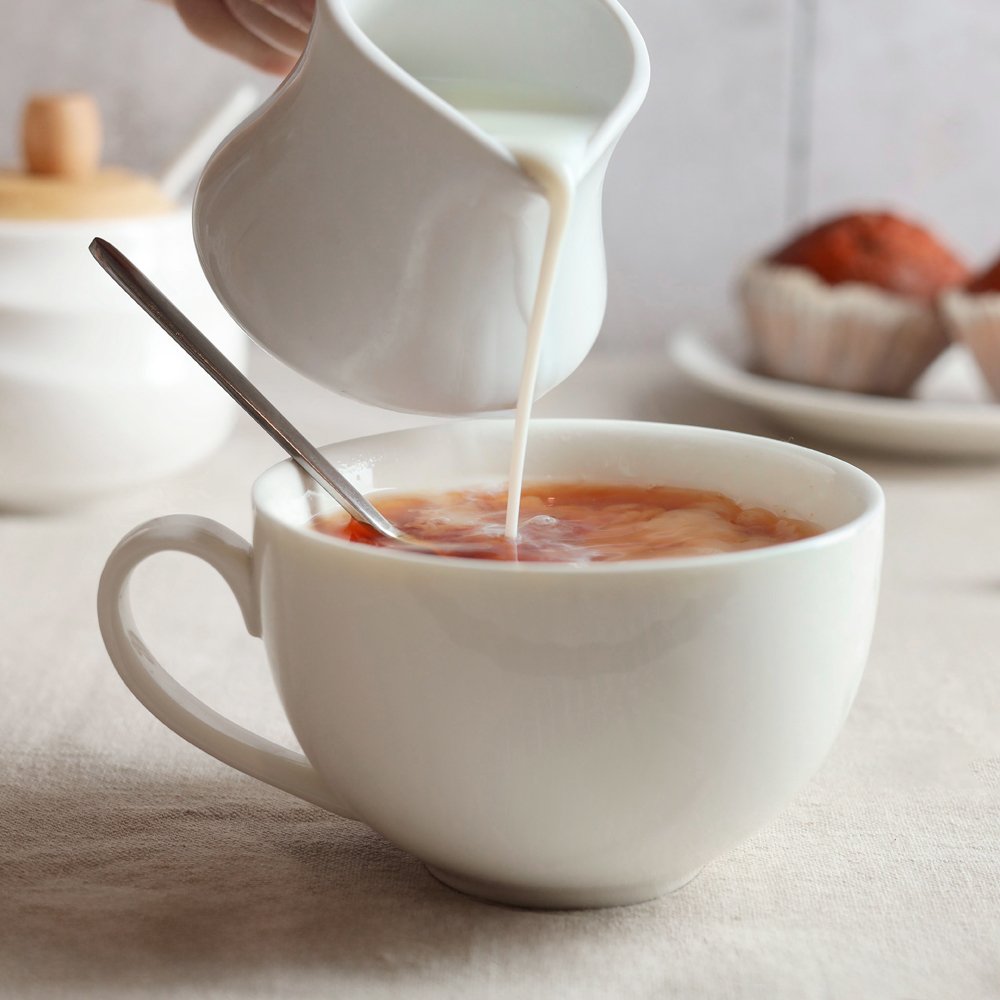Many tea drinkers are familiar with certain varieties of spiced tea, such as pumpkin spice tea and chai. But the world of spiced tea extends far beyond these popular varieties, offering adventurous tea drinkers the opportunity to explore an array of exotic aromas and palate-pleasing flavors. Below, learn about the basics of spiced tea and discover several of the rich and flavorful spices our Citizens enjoy the most.
History of Spices
Spices have a long and storied history, stretching back to the dawn of civilization. Millions of years ago, early hunter-gatherers wrapped game meat in the leaves of certain plants, and discovered that this process enhanced the taste. They began intentionally adding other parts of the plant — including the bark, roots, seeds and fruit — to their food for flavor..
Over the span of tens of thousands of years, spices became deeply important in various healing methods, religious rituals, burial rites and other cultural traditions. The earliest written records of spices come from ancient India, China and Egypt, and these regions were among the first to develop the spice trade route.
Spices like cinnamon, black pepper, cloves, cardamom and nutmeg spread through the Middle East and into Europe. By the Middle Ages, spices were among the most sought after and expensive products on the European continent. When early explorers sailed across the Atlantic, they began trading spices with the people of North and South America.
What Is Spiced Tea?
In many ancient cultures, spices were blended with water to create healing infusions and medicinal treatments. For instance, the history of chai stretches back thousands of years, when it was first concocted as an invigorating Ayurvedic beverage. At the time, chai contained a blend of many different spices that were believed to support vitality. It was not until the 1800s that black tea leaves, milk and sweetener were added to this ancient spiced tea blend.
Today, a wide variety of spices sourced from around the globe are used to prepare spiced tea. They can be added to black or green tea, or simply blended with other herbs and botanicals to create healthful caffeine-free infusions.
On a crisp autumn morning or chilly winter night, there is nothing that warms the body and spirit quite like a hot cup of spiced tea. Yet many spiced teas also taste quite refreshing when served on ice and can be enjoyed year-round.
5 Popular Spiced Teas
1. Turmeric Tea
Also known as “Indian Saffron,” turmeric has a long record of culinary, medicinal, spiritual and cultural use in India. Turmeric tea has a distinctive golden coloring and a robust, earthy, pungent flavor. It is a rich source of curcumin, which is highly regarded for its antioxidant and anti-inflammatory benefits.* Turmeric is the primary ingredient used in golden milk, a healthful beverage that also traditionally contains coconut oil, black pepper and milk. Golden milk is believed to boost immunity and reduce inflammation and joint pain.*
Try It:
- Organic Turmeric Ginger Green Tea
- Organic Turmeric Single Sips®
- Organic Honeybush Vanilla Turmeric SuperDigest Tea®
2. Cinnamon Tea
Cinnamon tea is among the most popular varieties of spiced tea. Many tea drinkers enjoy the warm, rich, spicy-sweet flavor of cinnamon. This fragrant spice has long been associated with luxury, and for centuries spice traders kept the exact origins of cinnamon a secret from European buyers. Cinnamon is thought to have antioxidant, antimicrobial and antifungal properties.*
Try It:
- Organic Lean Green SuperGreen Tea
- Organic Vietnamese Cinnamon SuperHerb® Tea
- Cinnamon Vanilla Red Tea
3. Ginger Tea
Ginger tea is known for its zesty, spicy flavor and stomach-soothing benefits.* It is among the oldest and most widely used spices in the world, having been used by Chinese healers for thousands of years. Ginger contains a high level of antioxidants called gingerols and shogaols, which are thought to improve circulation and reduce inflammation.* It has also been shown that it could be effective in reducing nausea and morning sickness.*
Try It:
4. Cardamom Tea
Known as the “queen of spices,” cardamom is among the most expensive spices in the world, trailing closely behind saffron and vanilla. It has a warm, rich aroma and an intense flavor that can range from spicy-sweet and citrusy to smoky and faintly minty. It is commonly used in culinary applications, especially in preparing hearty stews and spiced desserts. Cardamom may have antimicrobial and anti-inflammatory properties.*
Try It:
5. Clove Tea
Cloves have a potent aroma and warm, subtly sweet flavor. They have long been used in baking, and are one of the traditional mulling spices used to prepare mulled cider and wine. Cloves are native to Indonesia, where the Dutch held a monopoly on them until the 1700s. According to Ayurvedic healing methods, cloves may help reduce inflammation and support immunity.*
Try It:
*This statement has not been evaluated by the Food and Drug Administration. This product is not intended to diagnose, treat, cure or prevent any disease.






